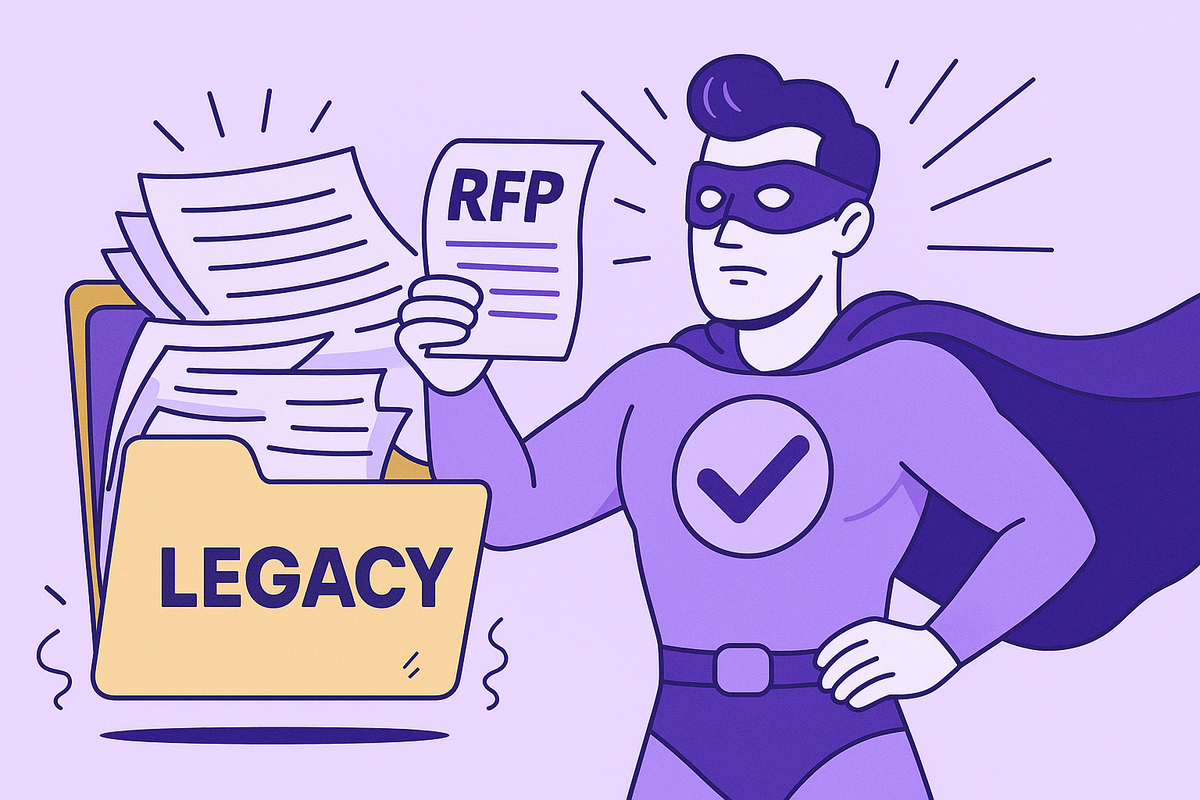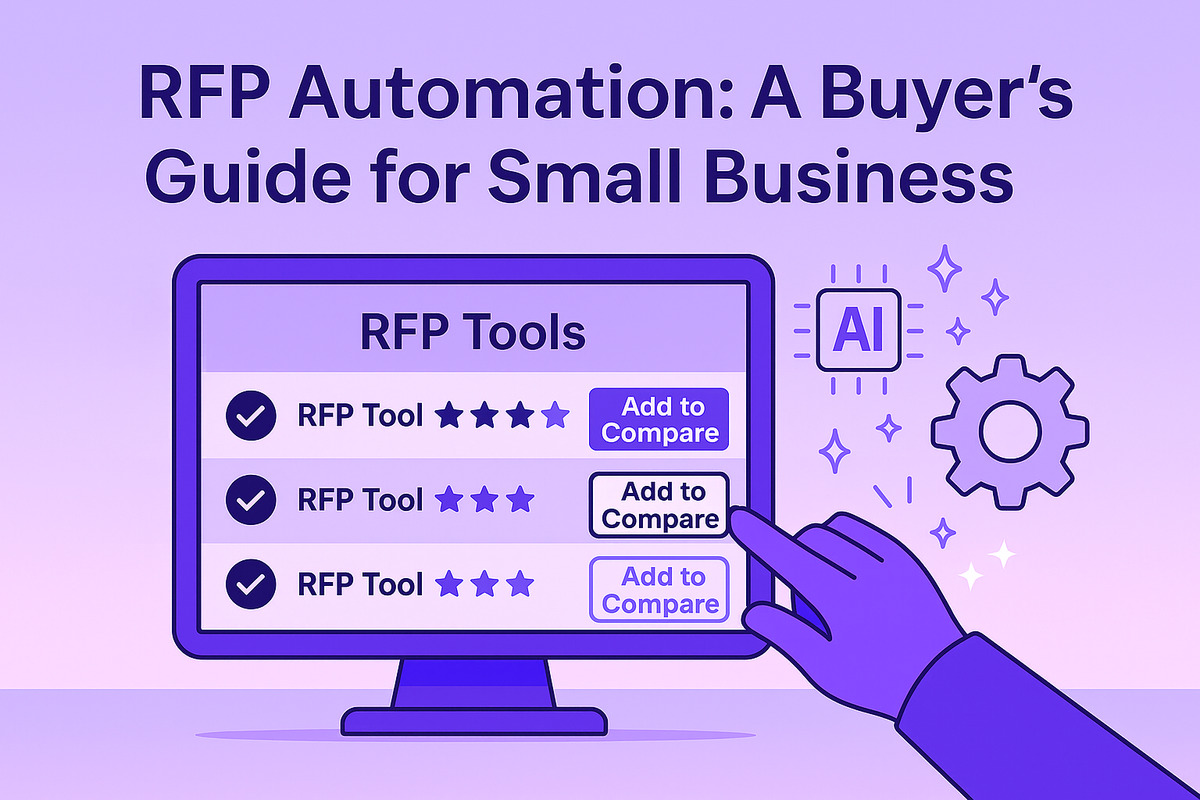Your RFP Process Shouldn’t Need Heroics
June 22, 2025
By
Evie Secilmis

Your RFP Process Shouldn’t Fall Apart When Someone’s on PTO
Summer’s here, and your sales engineers are finally stepping away—from back-to-back calls, late-night reviews, and the constant pull of “just one more thing.”
They’ve earned their PTO. But while they’re offline, the work doesn’t stop. RFP deadlines still land. Buyers still need answers. And too often, the process falls apart without the person who always “just gets it done.”
That’s not resilience. That’s a single point of failure.
The Problem: Every RFP Needs a Savior
We’ve all seen it.
The AE scrambling to draft a compliance section at midnight.
The SE jumping into Slack from the airport to answer a last-minute technical question.
The proposal manager cutting and pasting three outdated responses into something barely coherent—because the SME is on a beach without Wi-Fi.
These aren’t systems. These are survival tactics.
And eventually, someone burns out.
The Hidden Cost of “Always On” Teams
Burnout doesn’t just cost morale—it costs momentum.
When SEs, proposal managers, and compliance leads are always “on call,” quality drops, errors multiply, and deadlines slip. Constant reactivity turns even the most efficient teams into firefighters instead of strategists.
The hidden impact of being always on:
- Deals stall because critical answers aren’t documented.
- Errors creep in when rushed submissions go unchecked.
- Institutional knowledge walks out the door when experienced SEs leave.
Replacing a burned-out SE isn’t cheap—ramp time alone can cost six figures in lost productivity. The best teams don’t push harder; they design smarter systems that keep the process moving even when people step away.
The Fix: Systems That Scale, Even When People Are Offline
The best teams don’t just build for speed. They build for sustainability.
A strong RFP process doesn’t rely on heroics. It relies on:
- Centralized, up-to-date content that doesn’t live in Slack or someone’s inbox
- Role-based workflows that assign ownership automatically
- AI suggestions that pull from past submissions to draft smarter, faster answers
- Async collaboration tools that let your team contribute—even across time zones or PTO
When you structure your process like this, you remove urgency from the equation.
No one has to scramble. Everyone knows their role.
What a PTO-Proof RFP Process Actually Looks Like
A truly PTO-proof process runs itself.
Here’s what it looks like in action:
- The AE kicks off the RFP directly in Iris.
- AI populates 80% of the draft with approved content.
- Legal and compliance review asynchronously using built-in version control.
- The SE returns to find the proposal already near completion—with no missed deadlines or late-night catch-up.
That’s not wishful thinking—it’s how resilient teams operate. When knowledge is centralized and workflows are automated, people can disconnect without derailing deals.
Let Iris Handle the Heavy Lifting
With Iris, your team doesn’t have to be online 24/7 to keep deals moving.
Here’s how Iris makes it happen:
- “Ask Iris” surfaces high-performing answers based on deal context.
- Team members can tag, update, and approve content without rewriting from scratch.
- The system flags gaps or inconsistent language before answers go out.
So even if your best technical mind is offline, your best content—and your best process—is still at work.
From Coverage to Continuity: Rethinking Team Resilience
Resilience isn’t about coverage—it’s about continuity.
The most effective teams don’t scramble to fill gaps when someone’s out. They’ve built systems that scale knowledge, not stress.
With Iris, your RFP process becomes self-sustaining:
- Ownership is clear, even when roles shift.
- Content evolves with every submission, improving accuracy over time.
- Teams can focus on strategy instead of status checks.
True resilience means your process doesn’t pause when people unplug—it performs even better.
Final Thought: PTO Shouldn’t Be a Risk Factor
If your RFP process breaks down the moment someone’s away, it’s not a headcount issue—it’s a system issue.
This summer, let your team unplug.
And let your process do what it was built to do: deliver great answers, without the stress.
→ Want to see how it works? Book a walkthrough
Share this post
Link copied!



















